Weird Kitties Reviews, Batch Three (The Vorrh, The Goat Variations, Aurora)
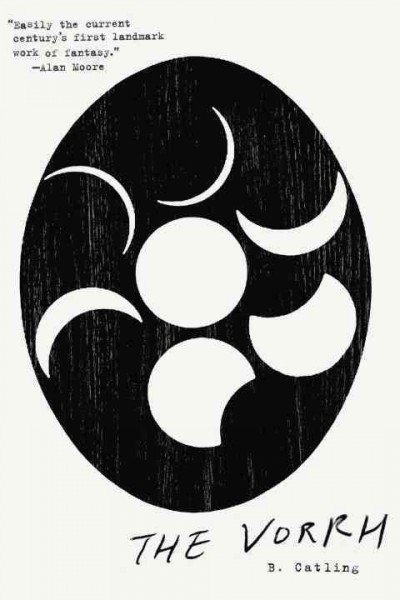

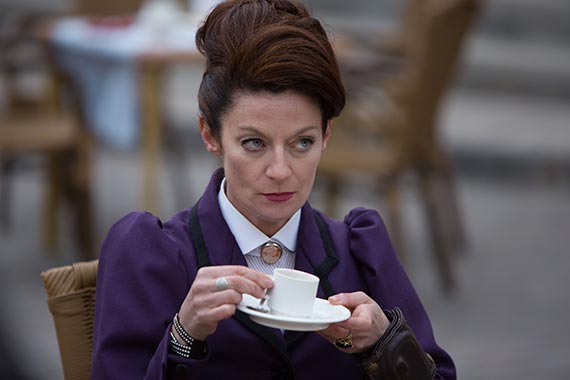
Well, you can see why the promotional campaign was structured like it was. There’s really no way to describe The Magician’s Apprentice without just calling it a trailer. It’s a forty-five minute slab of raw plot designed to set up whatever The Witch’s Familiar is going to be, which looks like something involving Davros setting up a trolley problem with Missy and Clara on one track and every Dalek ever on the other.
In one sense, then, it’s a pretty faithful imitation of Dark Water. But where Dark Water was a moody eleventh episode think piece that got to pay off a season’s worth of character and theme, The Magician’s Apprentice has to basically start from scratch. Accordingly, it’s built almost entirely out of bombast and spectacle. To say that the episode is stuffed to the gills is an understatement: six Doctors (unless they used a McGann Big Finish bit I missed, which at this point you wouldn’t bet against), Missy, UNIT, Davros, every Dalek ever, the Maldovarium, an Ood, the Shadow Proclamation, Karn, and a joke about the different versions of Atlantis.
This is a familiar approach for Moffat at this point, and one he’s good at. Sure, those inclined to play “spot the recycled bits” will not be short of options, but there’s no inherent reason to focus on the fact that the setup is just The Impossible Astronaut with a hint of Name of the Doctor over the fact that a guy who’s made of snakes, hand mines (what the actual fuck), and all the planes stopping are all new and clever ideas. As is the guitar/axe battle, although I think you’d be hard-pressed to say that scene worked. (Still, Peter Capaldi as Doof Warrior is one of those things you don’t want to argue with as such.) It’s not the best iteration of this particular style of everything and the kitchen sink setup that Moffat’s done, but it’s not the worst either.
I recognize that my tone here is that of a long lead-up to a paragraph beginning with the word “but,” but that’s unfair. The “but” I’d build to is simple enough: that this is basically raw spectacle with minimal actual substance. And it’s not that this is untrue (although I’m sure Jane will come up with some spectacular stuff); it’s just that it’s more than faintly ridiculous to ask anything else of a season premiere. Its job is to bring back the state of being where one thinks of every day of the week primarily in terms of its proximity to Saturday. And so this sort of massively high-speed tour through the series’ strengths and default tropes works.
But it is, necessarily, more a summary of what the show’s strengths are than a demonstration of what it has to offer going forward. And for the most part, those strengths come in the form of the cast. Jenna Coleman, for instance, is at this point reaping the full benefit of being the most richly characterized companion in the history of the series.…
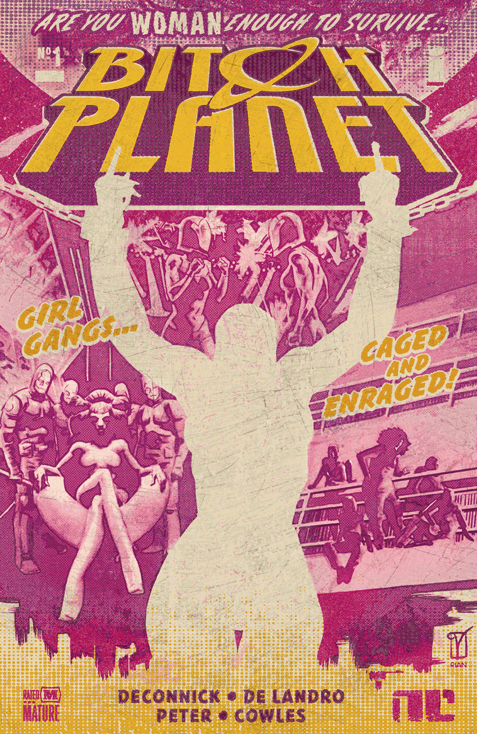 It looks like I forgot to actually name this week’s category last week, so let’s do a fairly easy one, at least in terms of this site’s readership: Best Graphic Story.
It looks like I forgot to actually name this week’s category last week, so let’s do a fairly easy one, at least in terms of this site’s readership: Best Graphic Story.
This is the category I’ve got the most locks in already – with the publishing calendar pretty much set for the year, I’ll be nominating The Wicked + The Divine, Bitch Planet, Crossed +100, and Questionable Content for sure. I’m still not sure about the fifth slot. The frontrunner is probably Trees, but I mean to go actively looking for work by people who aren’t white before I commit to that.
Here’s the Hugo Nominees 2015 Wikia’s list of eligible stuff. So, what are you thinking you’ll nominate?
And tune in tomorrow for another batch of reviews, including one from me of Brian Catling’s The Vorrh. Still room in that batch, so feel free to lob something to snowspinner at gmail.
Next week, let’s discuss… Best Professional Artist. That’s a fun one.
Oh, and there’s apparently some TV show about a magician and his apprentice on tonight? I dunno. Check back later today I guess. …
 The lovely folks at Pulpozaur asked me to do an interview with them, which went up today, and is particularly cool to my mind in that the site is a Polish site, and so the interview has been translated, which I believe marks the first time I’ve been translated. I always love seeing which bits of interviews people pull title quotes from – this one’s “Elusive in the same ways as the secret truths of the universe,” which I have to admit, sounds like the sort of quote I’d pull to title something. Here’s the bit of the interview that’s from:
The lovely folks at Pulpozaur asked me to do an interview with them, which went up today, and is particularly cool to my mind in that the site is a Polish site, and so the interview has been translated, which I believe marks the first time I’ve been translated. I always love seeing which bits of interviews people pull title quotes from – this one’s “Elusive in the same ways as the secret truths of the universe,” which I have to admit, sounds like the sort of quote I’d pull to title something. Here’s the bit of the interview that’s from:
I think criticism really has to show you things that weren’t necessarily obvious. And for all that these approaches fall short in terms of strict empiricism, I think they retain a lot of attraction. I’m not sure Freud did a great job of understanding many actual people, but man, he understands Hamlet well. And for all the failings of Marxist governments – and obviously a Polish readership is going to have a more acute understanding of that than I do – I think he captures what it feels like to be a relatively poor worker under capitalism like nobody else. So they’re good for finding new ways of looking at things, especially art, which isn’t bounded by empiricism anyway.
So I’m drawn to occultism, as an interpretive method, for many of the same reasons. There’s something about the idea that there’s some sort of lost, hidden order to things that’s just immediately compelling. Even if it’s just the human instinct for pattern recognition firing blindly at the random noise of an ultimately meaningless universe, which I don’t rule out, the sense of some almost present truth that slips out of reach whenever you grasp at it is fundamentally compelling. And so it’s a useful way to get at stories; especially because art tends to be elusive in exactly the same way as the secret truths of the universe.
The full interview is available here, although I imagine most of you will prefer the English-language version, available here.…
The USS Enterprise NCC-1701-D is one of my favourite designs for anything ever. I have been fascinated by this starship and the way it looks for *literally* almost as long as I can remember to a degree that borders on outright obsession. I cannot fully put into words what the Enterprise means to me because even I’m not sure I fully understand the true depths of that meaning myself. Whenever I look at it I’ll sit entranced its curves, the vibrant colouring of the panels and the deflector dish or the slope of the stardrive section as it flows elegantly into that giant saucer. I don’t even think there’s just one thing about it that makes it so incredibly beautiful; it’s a genuine work of art in the sense everything about it sings together in perfect harmony such that you could stare at it forever.
The Enterprise is the centrepiece of Star Trek: The Next Generation‘s iconography for me. It’s the one piece that sums up everything that I found so powerful and captivating about this series’ look and feel. When I would get merchandise for the show, I would often cut apart the various boxes and hold onto them: To me, the artwork and iconography was so beautiful and it so consumed my imagination I wanted to somehow be able to physically *hold* it, as if that would bring me closer to the emotions and atmosphere they conveyed, or that I might perhaps be able to channel that through me and bring some of it into my own being. My room would be littered with various carboard effigies of the Star Trek: The Next Generation logo or Playmates’ own space art that adorned their packaging: Dissociated, scattered signifiers of some ethereal confluence. And there always was that azure tinged Enterprise.
When I finally got the Playmates Enterprise toy it was an absolutely monumental moment in my life. Here finally was my very own spirit totem of this ship of the imagination, in three dimensional plastic instead of cardboard. My constant exposure to various representations of the Enterprise and my obsession with its design meant that I had become an expert on its every detail, but not in the classic Star Trek Nerd sense of memorizing deck blueprints or anything like that: My resources were disjointed publicity stills, toyetic caricatures, half-remembered effects shots and ViewMasters. What I knew best was the Enterprise‘s *soul*, not its body. And even then my intimate familiarity with every detail of the Enterprise‘s vibe allowed me to make some specific observations about this new toy.
First of all, even I could recognise Playmates’ Enterprise was based on the four-foot shooting model, not the six-foot one. This may sound like pedantic nerdery, but it’s actually hugely important to me because there are significant and noticeable visual differences between the six-foot and four-foot models and I think the six-foot model best captures the Enterprise‘s divine essence.…
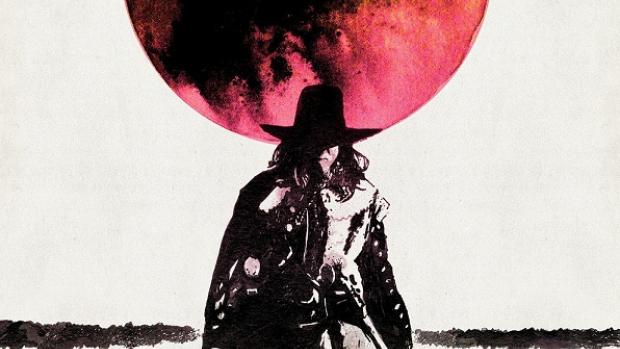 Okay, so the Iron Man thing seemed to go down well. Thanks to everyone who read, commented, retweeted, etc. I get the sense that my audience has just more than quadrupled in size, which is nice.
Okay, so the Iron Man thing seemed to go down well. Thanks to everyone who read, commented, retweeted, etc. I get the sense that my audience has just more than quadrupled in size, which is nice.
People new to my stuff may be unaware that I produce a regular Shabogan Graffiti podcast (or Shabcast, as I’m smug enough to call it). (In fact, it’s increasingly irregular, but in the sense of turning up more often that it should rather than less, so that’s not a bad thing… unless you hate it. But then you don’t have to listen to it, do you. Nobody’s forcing you.)
Pex Lives, my new Eruditorum Press colleagues, host the Shabcast for me and you can find my previous episodes archived here. There are chats about Doctor Who, the Mckellen Macbeth, the Jonathan Miller Alice in Wonderland, the Hugo Awards and the Sad/Rabid Puppies, etc.
And here’s a new one. This time, I’m joined by the lovely and incredibly erudite Gene Mayes – of various Pex Lives appearances and his own excellent new blog Being and Time Lord – to chat about the Gothic.
We also focus specifically on the movie A Field in England, Ben Wheatley and Amy Jump’s masterpiece of English Civil War-era madness, magic and mushrooms. There be spoilers here, by the way.
We range pretty freely and get on to all sorts of other stuff including (but far from limited to) alchemy, John Dee, Hammer movies, Gothic novels, Marxism and Anarchism. It’s a long one (just over 3-hours, so feel free to listen in fits and starts) but I hope worth your time.
Here‘s Gene’s blog post about A Field in England.…

Nyssa’s “resurrected” (well, cured) by the light that started the Universe, and which now threatens to end it—she is placed, mythologically, in the light of the Alpha and the Omega, which could only emanate from the Center. And here we should note the importance of Norse mythology, for the Center of the World Tree, the axis mundi, is the place where Past and Future, Above and Below, come together in the Here and Now. The very notion of such a union of opposites is implicit in the word “Terminus,” as the place-name denoted here functions as both the beginning and the end of “the line.“
As above, so below—this alchemical principle suggests the repetition of certain structures regardless of scale. The Terminus itself is a labyrinth, as is the ship that brings the Lazars, the ductwork underneath that ship, and indeed the TARDIS itself. A labyrinth is distinct from a maze, the latter being generally multicursal, whereas most labyrinths are traditionally unicursal, symbolizing the path to the Center (the seat of divinity) and back out again. As such, labyrinths are generally traversed twice, going in, then out, making them cyclical in nature.
Which brings us to the central conceit of Terminus itself, namely the impossible astronaut that lies at its heart, who supposedly “created” the Universe—but where did this pilot come from? Surely a time traveler came from a Universe, in which case the Universe wasn’t created but rebooted. Which is ultimately a form of Eternal Return. In which case, what happened to the astronaut’s universe? Wasn’t it, too, destroyed, to bring forth the Universe of our own? That seems to be the implication, hence the Doctor’s determination to prevent it from happening again. The eternal return of death and rebirth is indeed the source of suffering, so it seems.
 But once Terminus is de-mythologized, when Nyssa figures out what’s really going on, proper alchemy can be exercised. Nyssa can use her knowledge of alchemy to synthesize Hyrdomel, which keeps the labor force both alive and enslaved until they themselves can control the means of production. It’s an interesting word, “Hydromel.” It’s simply a combination of water (hyrdo) and honey (mel), the “bittersweet taste of life” as one of the Vanir puts it. Honey has its own esoteric connotations, as beehives were long ago likened to the process of death and rebirth, not unlike dung beetles in Egypt. Of greater interest to me, in context with Season Twenty, is that the socket in the Vanir armor where this elixir is placed happens to be adorned with a snake—harkening back to Snakedance.
But once Terminus is de-mythologized, when Nyssa figures out what’s really going on, proper alchemy can be exercised. Nyssa can use her knowledge of alchemy to synthesize Hyrdomel, which keeps the labor force both alive and enslaved until they themselves can control the means of production. It’s an interesting word, “Hydromel.” It’s simply a combination of water (hyrdo) and honey (mel), the “bittersweet taste of life” as one of the Vanir puts it. Honey has its own esoteric connotations, as beehives were long ago likened to the process of death and rebirth, not unlike dung beetles in Egypt. Of greater interest to me, in context with Season Twenty, is that the socket in the Vanir armor where this elixir is placed happens to be adorned with a snake—harkening back to Snakedance.Alchemically, though, this watery substance is what keeps the fire of the Terminus Light at bay, another union of opposites that actually leads to salvation.
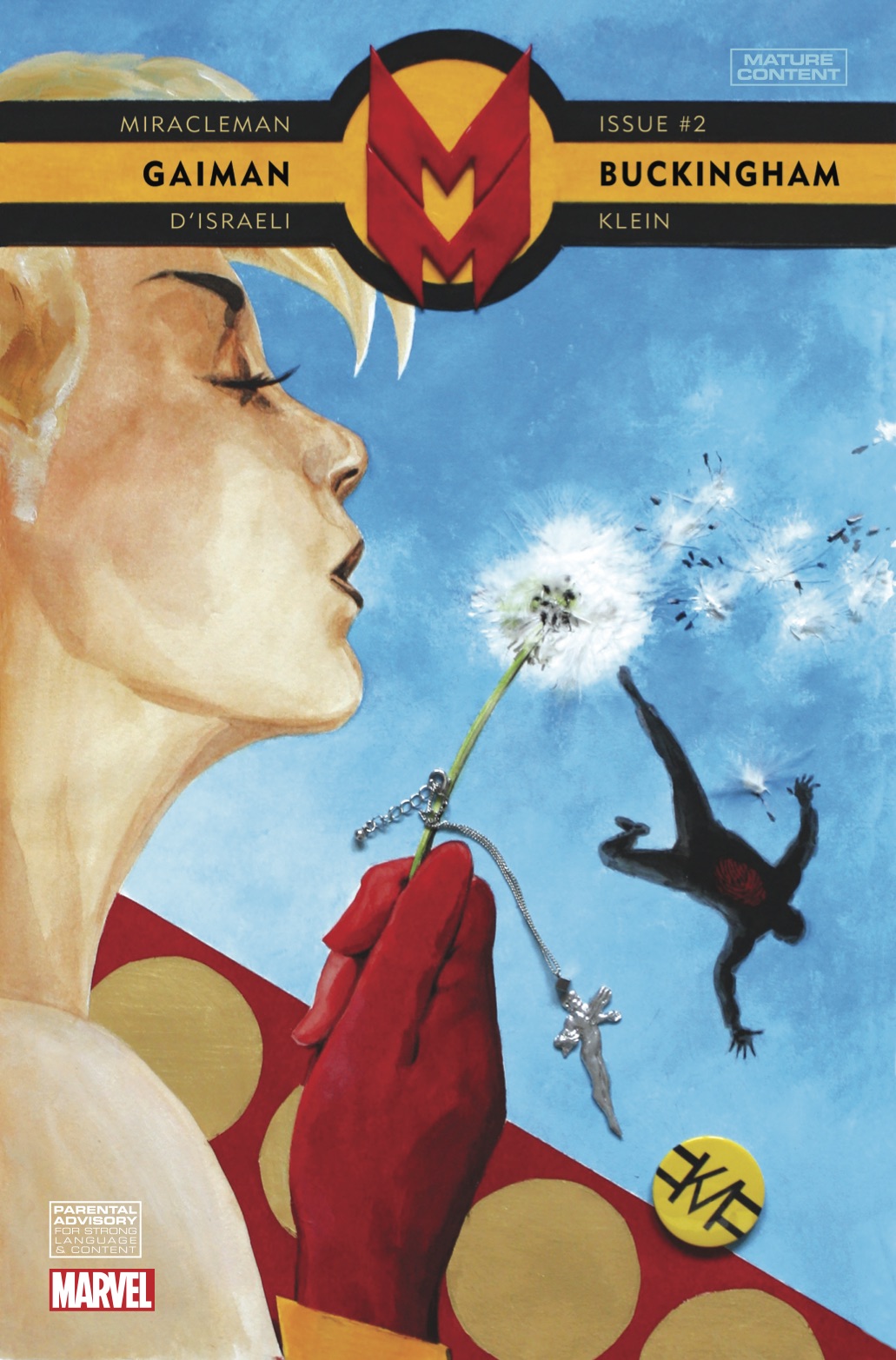 Some quick site announcements, by which I really just mean “yes, we know there are still some things that are a bit wonky and we have our entire IT team on it, but our entire IT team is better known as ‘Anna,’ so it goes at the speed it goes.” Working on the remaining layout and formatting problems now – those on smaller screen resolutions should be having a much better experience than they were yesterday, and we’ll have it even more improved later tonight. Then we’ve got some backend stuff that nobody but me is going to notice like making it so I get comments sent to me via e-mail, and sometime next week or so we’ll start working on redesigning the comment system.
Some quick site announcements, by which I really just mean “yes, we know there are still some things that are a bit wonky and we have our entire IT team on it, but our entire IT team is better known as ‘Anna,’ so it goes at the speed it goes.” Working on the remaining layout and formatting problems now – those on smaller screen resolutions should be having a much better experience than they were yesterday, and we’ll have it even more improved later tonight. Then we’ve got some backend stuff that nobody but me is going to notice like making it so I get comments sent to me via e-mail, and sometime next week or so we’ll start working on redesigning the comment system.
For now, comic reviews. As always, ranked from worst to best of what I paid money for. And tomorrow, Jane’s back with the second part of her look at Doctor Who Season Twenty.
Guardians of Knowhere #4
It is in some ways difficult not to simply feel angry at this book. Four issues gave nothing that could meaningfully be recognized as a plot. Deodato’s artwork shows all of his worst problems, namely a tendency to prioritize mood over storytelling (I had no shortage of trouble figuring out when characters were being killed or just knocked out here). But more than that… what’s the point of this? I mean, there wasn’t even a self-contained plot or arc to speak of, save for a debate about the ontological validity of Battleworld between Gamora and Angela. It was just four issues of Deodato mood pieces and contrived fight scenes. Utterly horrible miniseries, and emblematic of the way the initial promise of Secret Wars is just being squandered in the most cynical and wallet-draining ways imaginable.
The Infinity Gauntlet #4
Despite my increasing reservations about Secret Wars, this is continuing to be a real treat. Duggan caught my eye with his tie-in to the dreadful Black Vortex crossover, or whatever the hell that thing was called – I’ve already forgotten – and this is the second thing of his I’ve read, and his skill at writing young characters in emotionally mature drama with lots of spectacular punching is really impressive. This issue’s a bit sloppier than some – I admit I lost the plot of the fight scene for a chunk of it – but the character beats are still enormously strong, and I’m genuinely invested in how it ends, which is way more than you can say for most of Secret Wars.
Sex Criminals #12
Hilarious in the way that only Sex Criminals is, which is to say that within the first seven pages the phrases “translated from some kind of weird cum angel language” and “are you just saying that because I booped your clit” have both appeared. So has the beginning of a really good discussion of the way in which female sexuality is historically treated as a form of monstrosity. So, yes, this is basically perfect and wonderful. …
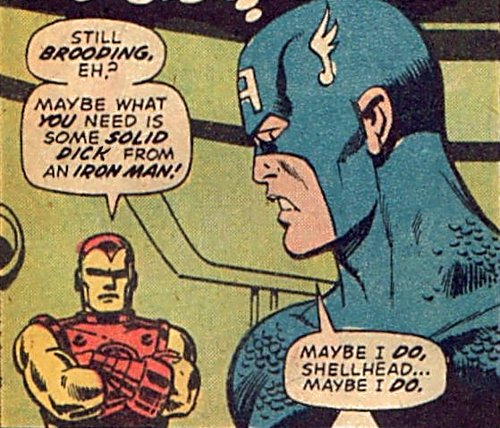
NOTE: This article has been amended to correct factual mistakes and clarify arguments.
Iron Man (2008), starring Robert Downey Jnr. and directed by Jon Favreau, is objectively one of the most evil films ever made. Possibly the most evil, actually.
Boilerplate
I’ll get around to justifying that opening statement in a bit. But first, I just want to say… ahem… fuck Tony Stark. Seriously, fuck him. The arrogant, smug, privileged, sexist, immature, selfish, capitalist prick. The rich, preening, self-satisfied asshole. The callous, self-involved, vainglorious, narcissistic wanker. This guy isn’t charming or funny or lovable. He’s scum, masquerading as humankind’s best friend. He’s the 1% as saviour of the world, at a time when the 1% are directly and knowing destroying the world. He’s the smiling face of the anthropocene (or rather capitalocene) extinction. He’s genocidal imperialism as (lone) humanitarian intervention. He’s neoliberal capitalism and neoconservative foreign policy as a series of bad-boy quips. He’s private capitalist industry as heroism. He’s mega-wealth as heroism. He’s white male privilege as heroism. He’s militarism, imperialism and American exceptionalism as heroism. He’s the War on Terror as heroism. He’s everything sick and twisted and rotten and filthy and evil and insane and false about our world, presented to us as aspirational role-model. He’s Donald Trump in a Robert Downey Jnr. mask… no, scratch that… Robert Downey Jnr. is a rich, reactionary dick too, isn’t he… so we might as well say that Tony Stark is Robert Downey Jnr. in a Robert Downey Jnr. mask. In any case, Tony Stark is everything we need to tear down, ruthlessly demolish, trample on and bury, presented to us as the best of humanity.
There’s no secret about this, of course. I’m not expecting any awards for searing, original insight. Everybody knows who and what Tony Stark is. He is, quite literally, stark. The films themselves make no secret about any of this. On the contrary, they loudly and proudly boast of it.
This stuff is baked into the character. It’s part of him by design.
I don’t pretend to know much about the Iron Man comics, original or contemporary. Generally speaking, I’m not a comics guy. I intend no disparagement of comics; they’re just not my can of Tizer, on the whole. So I come to these Marvel Cinematic Universe films (as I come to most films adapted from comics) as someone with little knowledge of the source material. But I’m not going to apologize for that, or seek to remedy it, for several reasons:
a) I can’t be bothered,
b) I don’t think it’s necessary, since the comics cannot possibly fundamentally alter the meaning of the films that stem from them, and
c) the vast majority of the audience – target and actual – are, like me, coming to these films without knowledge of the comics.
Having said that, I was told – by Holly B., during Shabcast 9, in which we chat about Iron Man, amongst other things – that Stan Lee’s original goal with Iron Man was to create a hero whom the hippies would hate but also be unable not to love.…
Any self-respecting toy collector knows you’ve got to have bad guys for your heroes to fight against. And yet this is Star Trek: The Next Generation, and in spite of what certain creative figures might thing, fighting is pretty much the last thing we ought to be considering. And so we see another manifestation of the curious dual role the Playmates line must play: Fun enough for kids to want to play with and bang together, and sophisticated enough to engage adults.
Playmates knew the Enterprise crew had to meet some people while they were out there exploring space, so as part of the first wave of releases they included a handful of aliens you could either speak or spar with: A Borg drone, a Ferengi, a Romulan commander and Gowron. In hindsight these are sort of interesting picks; the first wave came out in the wake of Star Trek: The Next Generation‘s fifth season and was clearly meant to capitalize on it-Just take note of how Captain Picard is wearing his “captain’s jacket” and, of course, the Star Trek 25th Anniversary branding. But while these aliens are in many ways the iconic ones for Star Trek: The Next Generation, none of them played especially major roles in the fifth season (with the notable exception of the whoppers that were “Redemption” and “Unification”): If anything, you’d at least expect a Cardassian to be among the initial releases, but nope. Presumably Playmates figured that since this was the first set of Star Trek: The Next Generation releases, it’d be best to start with the recognisable staples.
Even so, the inclusion of a Ferengi pirate, particularly one who looks like this, is an unexpectedly pleasant surprise. Although they were intended to be Star Trek: The Next Generation‘s primary antagonists, they were supplanted at the beginning of the third season by the Romulans, and they haven’t really played any significant role in the TV series’ plot in three years. But Playmates’ Ferengi is explicitly modelled after the ones in “The Last Outpost”: He’s got it all, from the animal skin uniforms to the fur boots to the crackling energy whips, down to the fact he looks eerily like Armin Shimerman’s Letek. Even the clip-and-collect card cites the same Federation intel the crew went over in “Encounter at Farpoint” and “The Last Outpost”. Furthermore, this Ferengi is most assuredly not meant to be a joke, with the card making numerous references to how cunning, dangerous and ruthless his people can be.
Here I am finding myself talking out of two sides of my mouth again. Because I have to write this with the conceit that I’m just now discovering this toy and the Playmates line now, when in truth this guy was one of the very first pieces of Star Trek anything I ever got. To me, this is *always* how the Ferengi have looked and acted, and this figure gave form to the half-remembered dreamlike imagery from half a decade prior I could only hazily recall.…